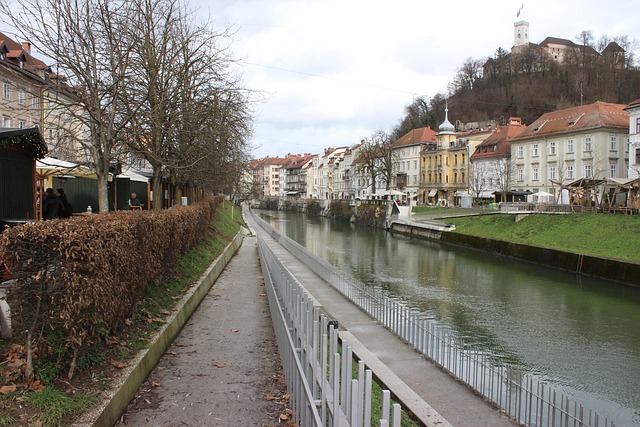Karachi, Pakistan's largest city, struggles with severe air pollution due to urban density and industrial activity. The Air Quality Index (AQI) is a crucial tool for tracking and addressing this issue in neighborhoods like Naya Nazimabad. By measuring key pollutants like PM2.5, PM10, nitrogen dioxide, sulfur dioxide, and ozone using advanced sensors and satellite imagery, the AQI empowers residents and authorities to make data-driven decisions. Collaborative efforts involving residents, local government, and environmental groups are needed to combat pollution from vehicle emissions, industrial activities, and domestic practices, aiming for a healthier future for Karachi's bustling urban landscape.
In the bustling metropolis of Karachi, understanding air quality indices is paramount for navigating the city’s health and sustainability. This article delves into the intricate details of the Air Quality Index (AQI) in Naya Nazimabad, a vibrant yet challenged neighborhood. We explore Karachi’s unique air quality concerns, highlighting the AQI as a powerful tool for gauging pollution levels. Through a case study, we analyze the factors impacting Naya Nazimabad’s air, offering insights into strategies to improve and maintain healthy air in this dynamic city of Pakistan.
- Understanding the Air Quality Index: A Brief Overview
- Karachi's Air Quality Concerns: The Naya Nazimabad Case Study
- Measuring Air Pollution in Urban Areas: Tools and Methods
- Factors Affecting Air Quality in Naya Nazimabad, Karachi
- Strategies for Improving and Maintaining Healthy Air in Naya Nazimabad
Understanding the Air Quality Index: A Brief Overview

The Air Quality Index (AQI) is a critical metric used to communicate air pollution levels in cities worldwide, including Karachi, Pakistan. It provides a standardized measure of air quality, allowing residents and authorities to take informed actions based on real-time data. The AQI ranges from 0 to 500, with lower values indicating better air quality. Each day, various pollutants like particulate matter (PM2.5 and PM10), nitrogen dioxide, sulfur dioxide, and ozone are monitored, contributing to the calculation of the overall AQI. This index is particularly relevant for Karachi, a bustling metropolis where high levels of pollution can significantly impact public health.
In Naya Nazimabad, Karachi, understanding the AQI is essential for residents to make informed choices about outdoor activities, especially during periods of elevated pollution. The index serves as an early warning system, prompting people to take precautions when air quality deteriorates. By staying updated on the AQI, the community can collectively work towards improving overall air quality and mitigating health risks associated with poor air pollution levels in this vibrant city.
Karachi's Air Quality Concerns: The Naya Nazimabad Case Study

Karachi, as Pakistan’s largest city, faces significant air quality challenges. The dense population and rapid urbanization have led to a complex web of pollutants, affecting the health and well-being of its residents. Naya Nazimabad, a bustling neighborhood in the heart of Karachi, serves as a compelling case study for these concerns. Here, high levels of particulate matter (PM2.5 and PM10) are common, largely due to construction activities, vehicle emissions, and nearby industrial areas. These pollutants can penetrate deep into the lungs, causing respiratory issues, cardiovascular problems, and even long-term damage to the body’s vital organs.
The air quality in Naya Nazimabad often exceeds safe limits, highlighting the urgent need for effective solutions. Karachi’s unique geography, with its confined spaces and frequent dust storms, exacerbates the problem. To combat these challenges, various strategies can be implemented, such as enhancing public transportation, promoting clean energy sources, strictly enforcing emission standards, and increasing green spaces. By learning from case studies like Naya Nazimabad, Karachi can take proactive steps towards improving air quality and ensuring a healthier future for its citizens.
Measuring Air Pollution in Urban Areas: Tools and Methods

In urban areas like Karachi, understanding air quality is paramount for public health and environmental management. Measuring air pollution involves sophisticated tools and methods to accurately assess various pollutants in the atmosphere. One common metric is the Air Quality Index (AQI), which provides a standardized measure of air quality based on key pollutants such as particulate matter (PM2.5 and PM10), nitrogen dioxide, sulfur dioxide, and ozone.
Researchers and authorities employ a range of monitoring devices like stationary and portable sensors to collect real-time data. These sensors detect pollutant levels by measuring optical properties and mass concentrations. Additionally, satellite imagery and modeling techniques play crucial roles in providing broader spatial coverage and understanding atmospheric processes. Data from these sources is integrated to generate daily AQI updates, enabling residents and decision-makers in Karachi to take informed actions towards improving air quality.
Factors Affecting Air Quality in Naya Nazimabad, Karachi

Air quality in Naya Nazimabad, Karachi is influenced by a multitude of factors. The city’s unique geographical location and climate play a significant role, with hot, dry summers and cold winters contributing to specific pollution challenges. Industrial activities in and around the area, including manufacturing and construction, are major contributors to air pollution, especially during peak working hours. Traffic congestion is another critical factor, as the dense population and limited infrastructure lead to a high volume of vehicles emitting harmful gases.
Additionally, natural elements such as dust storms from nearby arid regions and smoke from seasonal wildfires can exacerbate air quality issues. Local domestic activities, including burning of solid fuels for cooking and heating, also play a role, particularly in densely populated neighborhoods. Understanding these factors is crucial for implementing effective strategies to improve and maintain better air quality in Naya Nazimabad, Karachi.
Strategies for Improving and Maintaining Healthy Air in Naya Nazimabad

In the vibrant city of Karachi, especially in areas like Naya Nazimabad, maintaining healthy air quality is a collective effort. Residents, local authorities, and environmental organizations can collaborate to implement various strategies for improving and preserving the air we breathe. One effective approach is to promote green initiatives; planting trees and creating urban forests can significantly reduce pollution levels. Encouraging the use of public transportation, cycling, or carpooling can also decrease vehicle emissions, which are a major contributor to poor air quality in densely populated areas like Naya Nazimabad.
Additionally, raising awareness about energy-efficient practices at home and in businesses can make a substantial difference. Simple measures such as using LED bulbs, optimizing insulation, and adopting renewable energy sources can cut down on the demand for fossil fuels, thereby reducing emissions. Regular monitoring of air quality indices and sharing these insights with the community can help foster a sense of collective responsibility. In terms of specific actions, Karachi’s residents can contribute by staying informed about high pollution days and adjusting their activities accordingly, such as wearing masks outdoors or avoiding strenuous exercise during peak pollution times.
The air quality index (AQI) of Naya Nazimabad, Karachi, highlights the pressing need for urban areas to address pollution. This case study underscores the importance of monitoring and understanding local factors affecting air quality. By employing advanced measurement tools and implementing effective strategies, such as reducing industrial emissions, promoting public transport, and increasing green spaces, it is feasible to significantly improve air quality in Karachi. These measures are vital not only for the health of Naya Nazimabad residents but also for fostering a sustainable and vibrant urban environment.





Leave a Reply